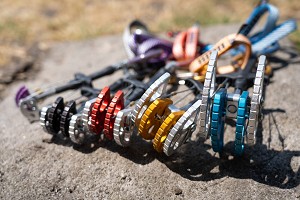
Released in 2016, Wild Country's New Friends are the result of several decades of gradual refinement on the iconic original. Featuring double axles, wide lobes, a thumb loop and an extendable sling, the latest design puts WC Friends on a par with the best cams currently available. Over the last year Simon Verspeak has put them through their paces on a wide range of rock types in the US, the UK and elsewhere in Europe. How did he get on?
If we were to give a prize to the single advance in equipment that allowed for the biggest rise in climbing standards, the award would surely go to the invention of the camming device. It was 1978 and Mark Vallance had produced a working prototype using a design from Ray Jardine. These were soon produced through the Wild Country brand. They were initially so secret that his climbing partners simply referred to them as 'the Friends'.
The constant 13.75 degree camming angle which was a fundamental to Ray's original blueprint is still used by Wild Country and some other manufacturers as the starting point today, since this angle gives consistent holding power across the range, meaning that it doesn't matter whether it's over cammed or under cammed - it'll still hold at full strength. Since the early days evolution has continued, with each brand adding their unique twist and raising the bar in terms of usability: fixed stems have become flexible; single axles have become double; cam lobes have widened; and slings are now frequently extendable. Perhaps uniquely, New Friends combine all these advantages.
I received a set of Wild Country's new Friends just before the 2016 summer rock season, allowing me masses of time for a comprehensive review of these cams across a variety of rock types and climbing situations, both personal and professional. When working as a climbing instructor I need the pro to be intuitive to place and remove, robust and confidence inspiring, and fumble-free. When climbing in my own time I want the same, sometimes just more urgently! New Friends tick all these boxes.
Size range
Across six units from size 0.5 to size 4, New Friends span from 20.6 - 112.1mm. Here's how they break down in range and weight:
Double Axles
These are the first camming unit that Wild Country has made with a double axle. Double axle designs are stronger, and they allow for a larger size range per unit. In practise this means that you can carry fewer cams and still fit a wide range of crack sizes. They can be used passively in a crack, and they are also extremely unlikely to invert or disform when in use, or when being transported.
Wild Country have added their own twist to this design with hollow axles (patent pending), which are stiffer but lighter when compared to a solid axle.
In terms of range, there's loads of overlap between each size. I found for the first time ever that I now routinely carry larger sizes. I have put that down to the fact that you can carry fewer of these and still get the same range of placement options, meaning I am happier putting a big size on even just in case because I have the extra capacity.
Wide Skimmed Lobes
The New Friends' Hot-forged cam lobes in a soft 6082 alloy are easy on the rock.
Some recent research explored the idea that anodising on the face of the cam lobe (i.e. the section which 'bites' into the rock) can reduce the holding power of the cam by slipping against the surface of the rock they are placed in. Since then, many of the major manufacturers have stopped anodising this section and many have added additional grooving. These New Friends have lobes that are 6mm wide on sizes 1-4 and 7mm on sizes 5-6, noticeably wider than the previous model. These are about 1mm wider than both the old Dragons and Camalots too. The biting edges have also had the anodizing machined off, meaning more friction and purchase on the rock.
After several months of good hard use these cams are now showing some roughing of the metal on the faces, but logically this only ought to add to the holding power. Having said all that I don't reckon I want to test this in a 'head to head jump off' test! If you worry that your older cams are anodised, the chances are that use has already worn some of this off.
Extentable slings and thumb loop
With the New Friend, Wild Country have built the first double axled cam unit that combines a thumb loop with an extendable sling. This combination is a big advantage for traditional climbers, giving you easy handling and more options in terms of placements. The UK market presents a distinct challenge to manufacturers; most UK trad routes follow a variety of features and wander about a fair bit. By contrast look at typical American routes, which tend to follow very consistent lines. With the option of a longer sling the New Friends fit into the wandering UK bracket very well. In addition the large size of the thumb loop makes them very easy to select and deploy and then to pull the sling through to clip.
Once placed in the rock, you can decide whether to extend or not; the soft and flexible 12mm dyneema sling is smooth to use. The short doubled loop of 9cm (12kn doubled) increases to 18cm (10kn extended) when pulled through, which in many circumstances saves you the need to clip a quickdraw into the cam as well. As a result you can often get away with carrying fewer quickdraws. And when you're in extremis, clipping straight into the sling is faster too, since you're not then reaching for a quickdraw.
I have heard it said that the design means they are not strength rated as highly as the heads on some other cams, the DMM Dragons for instance; however compared to a Dragon I found they are far easier to pull through and deploy. Wild Country say these have been extensively tested and by not crimping the wires there's no deformation of the loop. In practise the pull through is simple, and loading and even the odd fall hasn't shown any wear to the loop.
Trigger and stem
The floating triggers are made of chunky although not bulky plastic, stippled on the edges where your fingers sit to add grip. The pull is smooth, with a slight resistance from the springs which is nice to feel in your hand. The ergonomics of the design have been well considered. For use with smaller hands, for instance, the modest length between the thumb loop and the trigger means no big stretch, allowing a reduction in fatigue. I found the hand position felt very powerful.
The trigger wires are good and robust with no signs of wear even after a summer of use.
Andy Kirkpatrick features 'reach' on his top five list of what makes the perfect cam. Head to head New Friends have the longest stem when compared to BD Camalots and DMM Dragons, allowing you to stretch that bit further when placing them - a very useful feature.
Weight saving
I found the actual weight of the units to be very close to advertised, with some units actually a few grams less. The hollow axles, size range and extendable slings all allow further weight to be shaved off your harness.
Conclusion
Wild Country say the new Friends are "the only twin axle cam that combines the convenience and comfort of a thumb loop with the speed and utility of an extendable sling" and in use, this combination of thumb loop and extendable sling is a major advantage. I've found the ergonomics reassuring; they fit the hand in a very natural position and feel substantial without feeling chunky or bulky. Being a poor (if mainly through avoidance!) crack climber, I need to feel confident that the protection I place is quick and effective; these felt easy to place and with a reassuring 'bite'.
Over the last year I've subjected them to a significant amount of use on different types of rock (grit, dolerite, rhyolite, quartzite, sandstone, limestone, granite and possibly more) across the UK, in the US and in Europe, plus I have used them with all my clients. Both clients and friends have found these cams easy to use, and they have fast become our favourite. They have frequently found themselves on my mountaineering rack too.
If you are looking for one set of camming devices to use on British style trad routes, I don't think you could go far wrong with the New Friends. If I hadn't been given a set to review I'd certainly buy some!
About Simon Verspeak
Simon is a super keen climber, skier and mountaineer who works full time as a mountain instructor. He runs the small business of OranjeBergsport, providing bespoke skills for mountain adventuring and also freelances for a number of bigger organisations such as the Miltary and Jagged Globe. He is nominally based in North Wales, but also works in the Peak, Scotland and worldwide on expeditions.





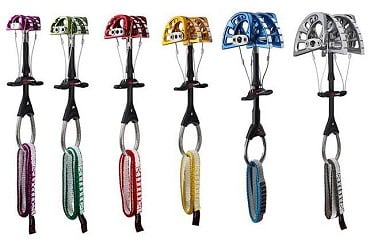
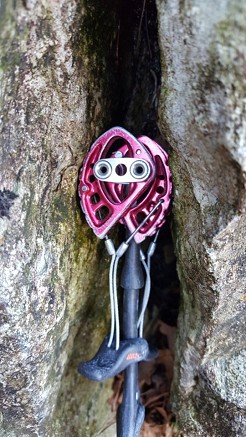
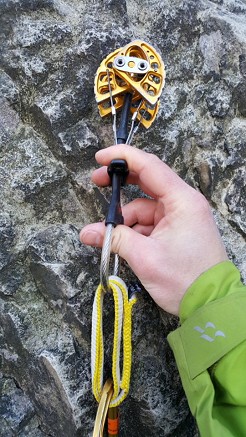

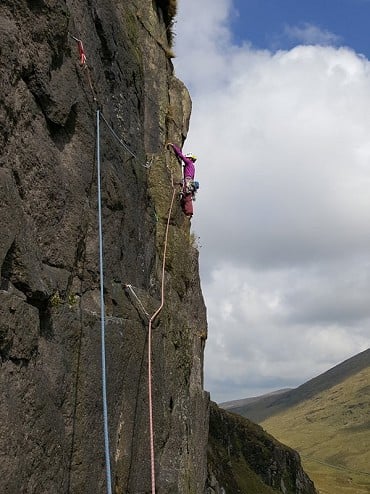
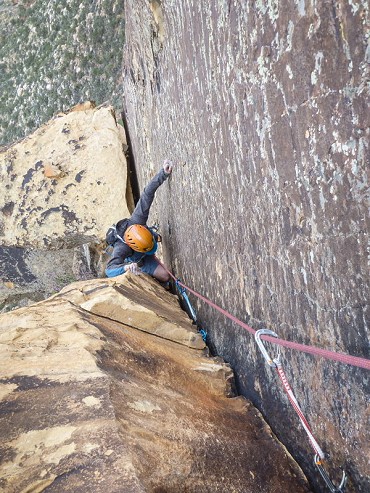
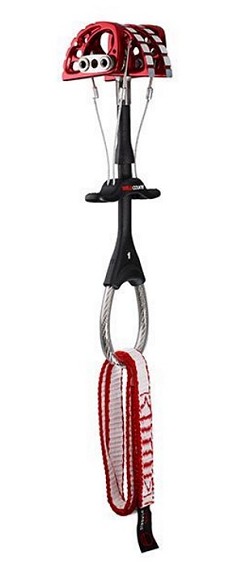

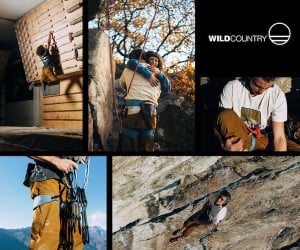
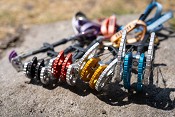
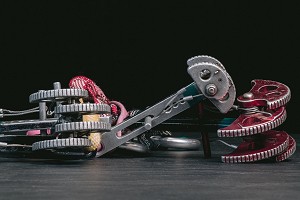

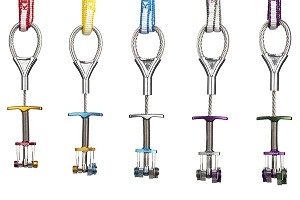
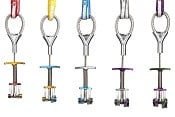
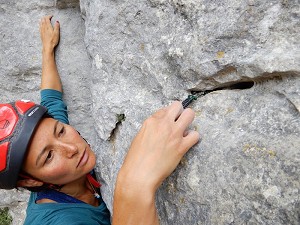
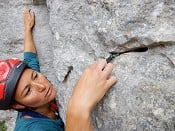
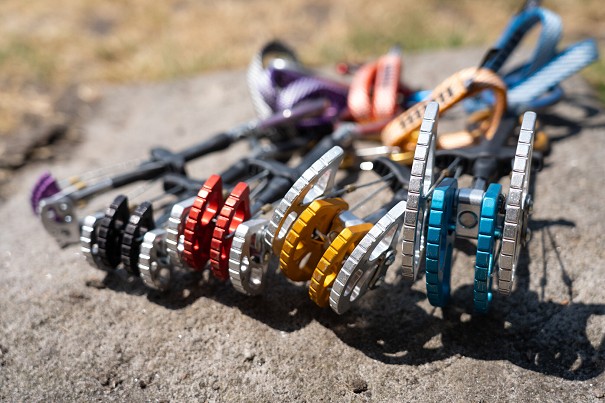

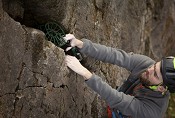
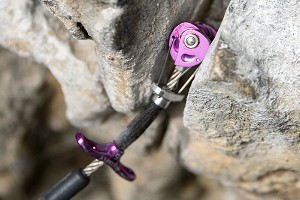


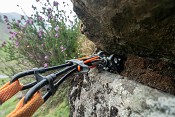
Comments